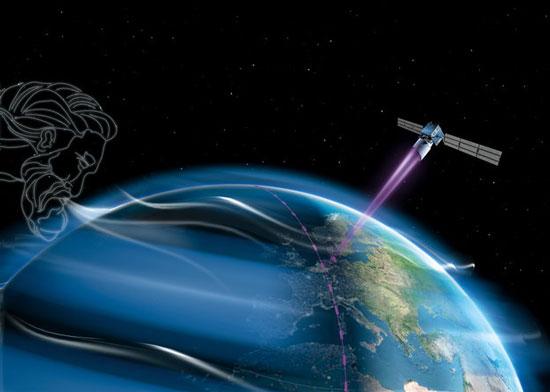| Apr 17, 2013 |
90 million laser shots bring Wind satellite back on track
|
|
(Nanowerk News) Developing new ways of monitoring Earth is always demanding, but ESA’s Aeolus mission has faced some particularly difficult technical challenges. However, with the success of intense high-energy tests on its novel laser there is now light at the end of the tunnel for this unique mission.
|
|
The Aeolus satellite will carry a single, but complex, instrument that will probe the atmosphere to profile the world’s winds. Reliable and timely wind profiles are urgently needed by meteorologists to improve weather forecasts. In the long term, they will also contribute to climate research.
|
 |
| ADM-Aeolus will provide global observations of wind profiles from space to improve the quality of weather forecasts. This novel mission will also advance our understanding of atmospheric dynamics and climate processes.
|
|
Aeolus carries a pioneering instrument called Aladin that uses laser light scattering and the Doppler effect to gather data on wind.
|
|
The laser generates high-energy UV light, which is beamed towards Earth through a telescope. As the light travels down through the atmosphere, it bounces off molecules of gas, particles of dust and droplets of water.
|
|
This scatters some of the light in all directions, including back to the satellite where it is recorded by Aladin.
|
|
By comparing the shift in frequency of the received light from the transmitted light caused by the Doppler effect, the motion of the molecules in the atmosphere can be measured, revealing wind velocity.
|
|
The laser transmitter is being developed by Selex-ES in Italy.
|
|
It has been a very long and difficult undertaking – forging new technologies in many areas such as optics, opto-electronics, precision mechanics and thermo-mechanical design.
|
|
Recent tests show all this effort has not been in vain.
|
|
Throughout three consecutive weeks, the laser transmitter remained perfectly stable at full energy, producing a total of 90 million UV laser shots.
|
|
Considering that each shot is 5 MW, peaking at an intensity similar to that of a lightning strike and that this is repeated 50 times a second – the stress on the optical components that shape and guide the laser beam is tremendous.
|
|
Alessandro d’Ottavi, the chief laser engineer at Selex-ES, says, “Bearing in mind the hurdles we’ve faced, this positive outcome is very important.
|
|
“The environment in space, the high laser power and the number of laser shots that the UV optics will have to withstand over the life of the mission all mean that the Aladin UV optics had to be pushed beyond the state of the art.”
|
|
Didier Morancais, project manager for the Aladin instrument at Astrium-SAS, adds, “This project has been on the brink of technology from the start. These positive results, together with added design margins within the laser and the instrument, are encouraging and paves the way towards a qualification of the first UV space laser.”
d ALMA array with all of its 66 antennas, could help elucidate the nature of submillimeter galaxies. The most plausible scenario is that submillimeter galaxies are created when large galaxies collide, their mutual gravitational pull triggering an intense phase of star formation. High-resolution images could show aspects of those galaxies' shapes, and possibly traces of the collision process itself.
|

